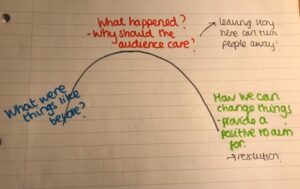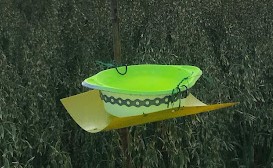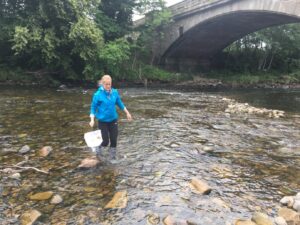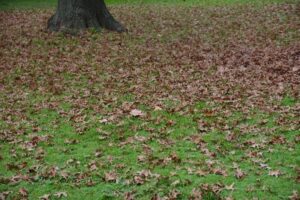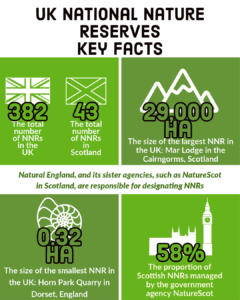Yesterday, I delivered the final lesson of my sequence of five. In this blog post, I will reflect on how my last three lessons went, and any adaptations I made. I will also discuss my experience of the Outreach and Engagement course as a whole, and how this has influenced my future plans.
Lesson 3
In my third lesson, we collected in all the traps that we had left out over the weekend. I was very pleased that the sampling method using the yellow bowls had been successful – despite it being relatively early in the season for insects to be around. The sampling method is known to be effective, as the yellow colouration actively attracts insects (Vrdoljak and Samways, 2011), though I think the warm and sunny weather also helped a great deal!
Generally, the students were initially quite disgusted at the insects they found, with comments bouncing round such as “eww”, “gross”, and “it looks slimy”. However, the majority managed to get over these feelings relatively quickly, after looking closer at the insects, and focussing on identifying them. All students managed to record the abundance and diversity of insects that they had trapped. The plenary activity at the end of the lesson involved students reflecting on something that they had done well in the lesson, and something that they had not done so well / had found hard. I had originally planned for students to write these points down on Post-it notes; however, given that we were running out of time, I conducted this as a quick-fire class discussion, instead. Many students thought they had done well to get the insects out of the pan trap, and manipulate them to identify and count them. It seemed that the students were pleased that they overcome their initial reaction of disgust. Most students commented that the hardest part of the lesson had been trying to identify the insects. Indeed, this is something that takes a lot of practice. Most students got the hang of identifying whether an organism was an insect, based on the number of legs the organism has, but found identifying the different kinds of insect more challenging.
Circulating around the classroom, I found that some students were also finding it difficult to record insect diversity in the template data table. Thinking quickly, I helped students with this by covering the bottom half of the table containing additional sections. I then asked the students to count how many different insect groups they had recorded by counting how many rows they had filled in in the table. I explained that each row in the table was a different insect group, so by counting the number of rows that they had filled in, we could work out the insect diversity. This worked well, and helped students better understand how to record insect diversity in the table.
One student commented, “This is so strange”, and at the end of the lesson someone else told me “I enjoyed that lesson”. The students’ enthusiasm, motivation, and comments made me think that they had enjoyed doing something different, in the form of a practical activity, the likes of which they had not previously been involved in.
Lesson 4
In the fourth lesson, I had initially planned for the students to make a graph, interpret their graph, and decide whether we could draw fair conclusions. However, we did not manage to cover the section on fair conclusions as quite a few students arrived late to the lesson from their previous class. Also, the students found making the graph very tricky. Instead of rushing them, and moving on to the next part of the lesson, I decided that it would be best to spend more time on the graphs to make sure that the students had properly understood their results, and had something to present in their poster. I was pleased that I did this as, at the end, all students were successfully able to present their graphs and interpret their results. I think if I had rushed on to cover the other section of the lesson, students would only have partially met each of the two learning objectives (present and interpret data in graphs, and draw fair conclusions) instead of fully meeting the one important objective (present and interpret data in graphs).
I made graph templates to help the students complete the graph, after their teacher advised me that the class I was teaching had struggled with graphing data in the past. The graph templates I made were extremely effective in helping the students to plot their results and understand their data.
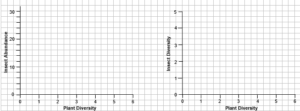
The graph templates I made for the students to fill in. The template contained axis with an appropriate scale for their data, and were pre-labelled.
The class I was delivering my project to had never done compound graphs before – and the graph templates I made were a very good tool to help them do this. I had wanted to include compound graphs in my lesson, because a benchmark of one of the Level 3 mathematics Es&Os (MTH 3-20b and MTH 2-21a/3-21a) that I was covering was:
“Organises and displays data appropriately in a variety of forms, for example, compound bar and line graphs and pie charts, making effective use of technology as appropriate”.
Learning from my experience, in the future, teachers delivering this lesson to an S1 class that are relatively new to compound graphs, should do as I did and cut the fair conclusions part out of the lesson, in order for students to have more time to plot and understand what their graphs show. However, if the lesson is being delivered to S2 students, then the second part of the lesson could be incorporated, as these students will have had more practice drawing graphs, and will be quicker at understanding how to plot and interpret a compound graph. I think the lessons I have planned allow sufficient flexibility for this to happen.
Lesson 5
In my last lesson, I asked the students to complete any sections of their poster that were unfinished. We then looked at the future of insects. The students seemed to enjoy researching entomological careers, and many were surprised and intrigued at some of the ones they found – such as a forensic entomologist! They seemed excited about downloading the iNaturalist app to identify insects and contribute to scientific records out of school – it was quite difficult to stop students getting their phones out to download the app before the end of the lesson! At the end of the lesson, I asked the students to fill in a feedback form, using the 4,3,2,1 approach, in which I asked them to note down four new facts or skills that they had learnt in my lessons, three words they would use to describe insects now that they have completed the project , two activities they enjoyed over the five lessons, and one thing that they will do in the future to help insects. I also asked them if there was anything that they had not enjoyed. Overall, I received really positive feedback, and the students seemed to have picked up most of the knowledge and skills in the lessons’ learning objectives. I will reflect on the feedback I received in further detail in my Technical Report.
Overall reflection
This has definitely been the most rewarding course I have taken whilst at university. Going from students thinking that insects are “scary” and “disgusting” at the start of the first lesson, to describing insects as “interesting”, and “helpful” at the end of the last lesson made me feel like I had made an impact on the students understanding, and had achieved my goal of raising awareness, and sparking interest in, what is often a very overlooked and underappreciated animal group.
Though my plans are currently to go into the field of ecological consultancy, completing the Geosciences Outreach and Engagement course has made me want to continue communicating ecology to a public audience, children and adults alike, as I found it to be highly rewarding. I will continue to raise awareness of my love of ecology on my nature-themed Instagram account, and in my spare time, I aim to be involved in outreach volunteering projects. To this end, I have already signed up to volunteer at weekends as part of Northumberland Wildlife Trust’s “Osprey Watch”. I will staff an osprey visitor hide, and communicate facts about these birds, and why they are important. I am sure the experience of planning my “Insect Investigation” project, and delivering my lessons will serve me well in providing an engaging visitor experience. For example, from my first lesson containing the insect quiz, I realised just how impactful startling facts can be in capturing people’s interest, and getting them to want to find out more. This is a tactic that will definitely prove useful when trying to communicate about the ospreys to hide visitors.
I look forward to spreading awareness about another aspect of ecology, and I will hopefully inspire even more people to take an interest in the natural world.
References
Vrdoljak, S. M. and Samways, M. J. (2011) ‘Optimising coloured pan traps to survey flower visiting insects’, Journal of insect conservation, 16(3), pp. 345-354.



